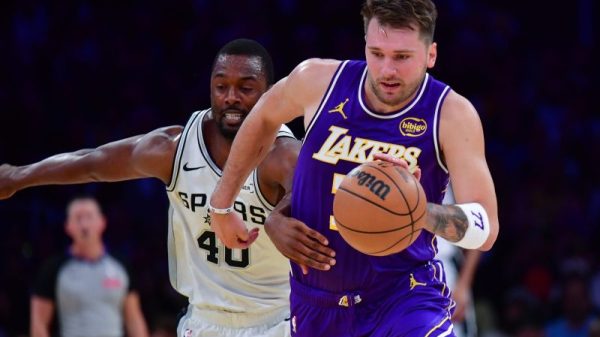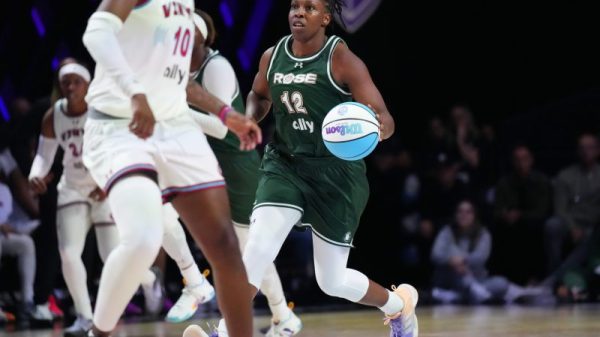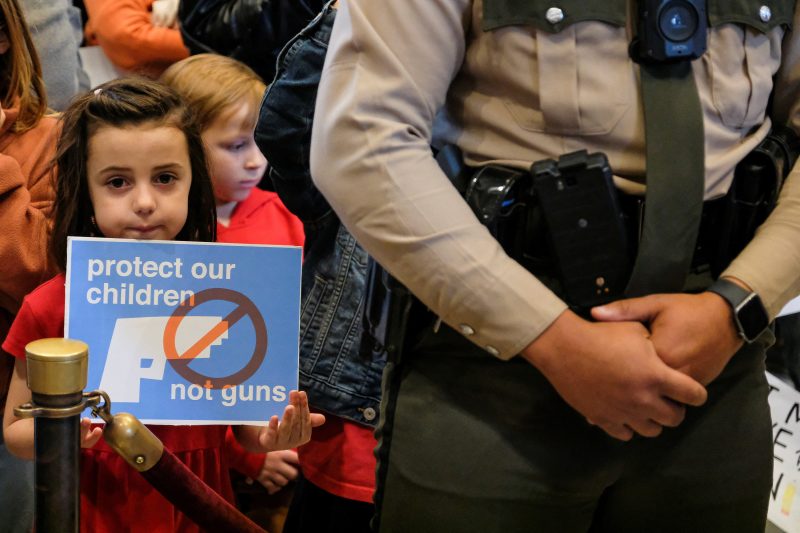There is a wide divide in how White and Black Americans view firearms, a divide that permeates our political discussions about them.
For many White Americans, firearms are a hobby or a tool or a political statement. They’re something common for self-defense in rural areas or as a weekend activity or, nearer the extreme, a statement of anti-government individualism. For many Black and Hispanic Americans, guns are a community threat, something that contributes to constant worry. For most White Americans, gun violence is something distant. For most Black and Hispanic Americans, gun violence is something that they or their families have experienced.
New research from KFF shows that 42 percent of Black Americans have personally experienced being threatened by a gun, seeing someone injured with a gun or having a family member killed by a gun, including by suicide. Nearly 60 percent of Black Americans say that they or a family member has experienced one of those things.
For Hispanic Americans, the figure is 54 percent: more than half have personally experienced guns in those ways or have had members of their families do so. Fewer than half of White Americans report having family members be that close to gun violence, and only about a quarter of Whites have personally experienced any such threats or violence.
Predictably, KFF found that Black and Hispanic Americans were more concerned about gun violence than Whites. More than 30 percent of Blacks and Hispanics said they worried a loved one would be a victim of gun violence daily or near-daily, compared to 10 percent of Whites. More than half said gun violence was a major concern or constant threat in their communities; less than half of Whites said the same thing.
Fully a third of Black Americans said they felt “not too” safe from gun violence or not safe at all. Among Whites, the figure was only 1 in 10.
Concern is higher among parents than non-parents, with a quarter of parents of children under the age of 18 saying they worried about gun violence almost every day at least.
Analysis of Centers for Disease Control and Prevention (CDC) data by Pew Research Center shows a racial gap on this question, too. More than half of Asian, Black and Hispanic parents say they’re worried about their children being shot. Only about a third of White parents express the same concern.
Again, there’s good reason for the concern, particularly among Black Americans. The rate of gun deaths among Black children is five times that of White children.
Most gun deaths in the U.S. are suicides, but most gun deaths among children are homicides. Here, too, there’s a racial divide.
“In 2021, a large majority of gun deaths involving Black children and teens (84%) were homicides,” Pew’s John Gramlich writes, “while 9% were suicides. Among White children and teens, by contrast, the majority of gun deaths (66%) were suicides, while a much smaller share (24%) were homicides.”
For several years, guns have been the leading cause of deaths for kids. Most of the deaths in 2021 — a year in which Pew estimates that gun deaths among children had jumped 50 percent relative to two years prior — were among those aged 12 to 17. A disproportionate percentage were Black teenagers.
Of course, these figures overlap with other factors. People who live in urban areas are more concerned about gun violence, with 6 in 10 telling KFF they view gun violence as a constant or major concern. Among rural Americans, only 3 in 10 did. Similarly, more than a third of urban parents told Pew that they were extremely or very worried about their kids being shot, twice the percentage of those from rural areas.
Lower-income Americans were similarly more likely to express concern about gun violence and, particularly among Whites, to indicate that they’d experienced gun-related incidents. More than 6 in 10 parents from lower-income households said they were at least somewhat worried about their children being victims of gun violence, more than twice the value for parents from upper-income households.
The entanglement of race, income and community has long made evaluations of crime and gun violence complicated. The differences in concern captured in the research from KFF and Pew, though, offer insights into how Americans view guns politically.
Consider the low rates of concern among rural Americans and Whites, the former category of which fits neatly into the latter. If your personal concern about and experience with gun violence is low, how likely are you to view efforts to control gun ownership favorably? Particularly given that rural Americans are more likely to own guns, often for hunting or for home protection. But also for political reasons: Data from the General Social Survey shows that rural Republicans are more likely to own guns than rural Democrats — who own guns at rates equivalent to urban Republicans.
Urban gun violence and gun violence that affects Black people is often used as a cudgel against Democrats. How are they demanding new constraints on gun ownership when it’s their own cities and their own (Black) voters who are experiencing the worst rates of gun homicide? The New York Post demonstrated this cynicism neatly in its cover Tuesday, elevating Pew’s new data.
There is, of course, no evidence that the increase in gun deaths among children was related to the bail reforms the Post opposes or to political rhetoric. The Post doesn’t explicitly say it is, noting that the increase occurred not because of but simply “after” activists began calling for police reforms as part of the Black Lives Matter protests several years ago. The deaths are simply described as “the cost” — allowing the readers to answer the question “the cost of what?” The deaths of Black children, one of whom is shown in a photo on the cover, becomes a way for the Post to editorialize against its presentation of the left.
Elsewhere in the conservative media, anecdotal video clips showing gun violence involving Black people are common. They’re used to reinforce the false idea that urban areas — run by Democrats, of course — are experiencing uncontrolled, unprecedented crime. For White Americans who don’t consume that media, gun violence is often presented through news reports that often center on mass shootings, a relatively uncommon manifestation of gun violence.
For Hispanic and particularly Black Americans, gun violence is different, more present and more urgent. Those with the power to change federal laws governing access to firearms, of course, are mostly not Black and Hispanic Americans.



























